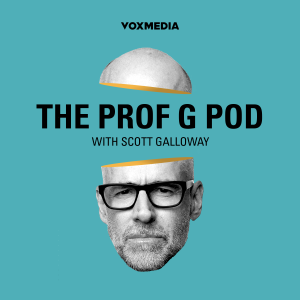

Key Themes and Important Ideas from Daniel H. Pink's "WHEN"
This briefing document summarizes the main themes and important ideas presented in Daniel H. Pink's "WHEN," a book exploring the hidden science of timing and its impact on various aspects of human life, from daily routines to significant life events. Pink synthesizes research from diverse fields to reveal predictable patterns and offer practical advice on how to optimize our experiences by aligning our activities with the "when."
I. The Predictable Pattern of the Day (Part One)
- The Daily Oscillation: Pink argues that our days are not uniform but follow a predictable pattern of a peak, a trough, and a rebound in mood and performance. This "daily oscillation" is driven by our circadian rhythms, our internal biological clocks.
- "Across continents and time zones, as predictable as the ocean tides, was the same daily oscillation—a peak, a trough, and a rebound."
- Chronotypes: Individuals have different "chronotypes" – personal patterns of circadian rhythms that influence when they naturally feel most alert and energized. These generally fall into three categories: larks (morning people), owls (evening people), and third birds (somewhere in between). Understanding your chronotype is crucial for optimizing your daily schedule.
- Task Type and Time Alignment: Different types of tasks are better suited for different times of day.
- Analytic Tasks: Requiring focus, vigilance, and inhibitory control (like problem-solving or critical analysis) are generally best performed during the peak period (typically the morning for most people).
- Insight Tasks: Requiring less inhibition and more creativity and "aha!" moments (like brainstorming or solving puzzles) often benefit from the looser mental state of the rebound period (typically the late afternoon or evening).
- The trough period (typically the afternoon) is generally a low point for both types of tasks.
- The Importance of Breaks: Pink emphasizes that breaks are not a sign of weakness but are essential for maintaining performance and well-being.
- "A growing body of science makes it clear: Breaks are not a sign of sloth but a sign of strength."
- Types of Effective Breaks:Restorative Breaks: Longer breaks for eating, socializing, or engaging in relaxing activities can mitigate the negative effects of the afternoon trough, as demonstrated by improved test scores in Danish schoolchildren and more lenient parole decisions by Israeli judges after breaks.
- Vigilance Breaks: Short, structured breaks during tasks requiring sustained focus can help maintain concentration and prevent errors.
- Naps: Short naps (around 20-40 minutes) can significantly improve cognitive performance, reaction time, and alertness.
II. Beginnings, Endings, and In Between (Part Two)
- The Power of Beginnings: Beginnings are more significant than we often realize. They create "new mental accounts" and the "fresh start effect," motivating us to pursue goals with renewed vigor. Temporal landmarks (social like Mondays and New Year's, or personal like birthdays) provide opportunities for fresh starts.
- "Most of us have harbored a sense that beginnings are significant. Now the science of timing has shown that they’re even more powerful than we suspected. Beginnings stay with us far longer than we know; their effects linger to the end."
- Premortems: To avoid "false starts" in projects, Pink recommends conducting a "premortem" – imagining the project has failed and asking the team to identify potential reasons for the failure beforehand.
- The Peculiar Effects of Midpoints: Midpoints can trigger both a "slump" in motivation and a "spark" that re-energizes effort. Setting interim goals, publicly committing to them, and using techniques like Hemingway's stopping mid-sentence can help turn a slump into a spark.
- The Significance of Endings: Endings shape our behavior in predictable ways:
- Energize: We tend to exert more effort as we approach a finish line (the "goal gradient hypothesis").
- Encode: We often overemphasize the final moments of an experience when we remember it (the "peak-end rule").
- Edit: Endings prompt us to evaluate what's essential and discard the non-essential.
- Elevate: Meaning and poignancy are heightened at endings, often leading to a search for significance.
- The Importance of Crafting Endings: Paying attention to and consciously shaping endings (of projects, meetings, etc.) can significantly impact their lasting effect.
III. Synching Fast and Slow (Part Three)
- The Science of Group Timing: Synchronizing with others has profound effects, fostering feelings of belonging, enhancing cooperation, and even increasing pain tolerance ("rowers' high").
- "Synchronizing makes us feel good—and feeling good helps a group’s wheels turn more smoothly. Coordinating with others also makes us do good—and doing good enhances synchronization."
- Principles of Effective Group Timing:Synching to the Boss (External Standard): Establishing clear external standards (like the Mumbai dabbawalas' train schedule) imposes discipline and rhythm.
- Synching to the Tribe (Shared Identity): Shared codes, garb, and a sense of belonging enhance coordination and trust.
- Synching to the Heart (Shared Purpose): A common mission or belief system can create strong alignment and motivation.
- Improv Exercises for Group Timing: Pink includes practical improv exercises to improve team coordination and synchronization.
IV. Thinking in Tenses (Part Four)
- The Pervasiveness of Time in Language: Our language, particularly the use of tenses, deeply influences how we think about ourselves and the world.
- The Benefits of Past Tense Thinking (Nostalgia): Nostalgia, once considered a negative emotion, is now understood to be a "vital intrapersonal resource" that fosters a sense of meaning, connection, positive mood, and well-being.
- The Impact of Future Tense Thinking (Prospection): Our ability to "pre-experience" the future is crucial, but the language we speak can affect our future-oriented behaviors. Languages with weak future tenses (where the future is not grammatically distinct from the present) are correlated with more future-oriented actions like saving and healthy habits.
- Integrating Perspectives on Time: The key is not just to live in the present but to integrate our perspectives on the past, present, and future into a coherent understanding of ourselves and our purpose.
V. Practical Applications and "Time Hacker's Handbook"
The book concludes with practical advice and a "Time Hacker's Handbook" offering actionable strategies for applying the science of timing to daily life, including:
- Determining your chronotype.
- Aligning task types with your daily peak, trough, and rebound.
- Strategically incorporating different types of breaks.
- Leveraging temporal landmarks for fresh starts.
- Managing midpoints in projects and personal pursuits.
- Creating effective endings.
- Improving group synchronization.
Key Takeaway:
"WHEN" reveals that timing is not just a minor detail but a fundamental aspect of human experience that significantly impacts our performance, well-being, and interactions. By understanding the hidden patterns of our days, the power of beginnings and endings, and the dynamics of group synchronization, we can make more informed decisions about when we do things to lead richer, more engaged, and more successful lives. As Miles Davis famously said and Pink echoes, "Time isn’t the main thing. It’s the only thing."
RYT Podcast is a passion product of Tyler Smith, an EOS Implementer (more at IssueSolving.com). All Podcasts are derivative works created by AI from publicly available sources. Copyright 2025 All Rights Reserved.More Episodes
All Episodes>>Create Your Podcast In Minutes
- Full-featured podcast site
- Unlimited storage and bandwidth
- Comprehensive podcast stats
- Distribute to Apple Podcasts, Spotify, and more
- Make money with your podcast











